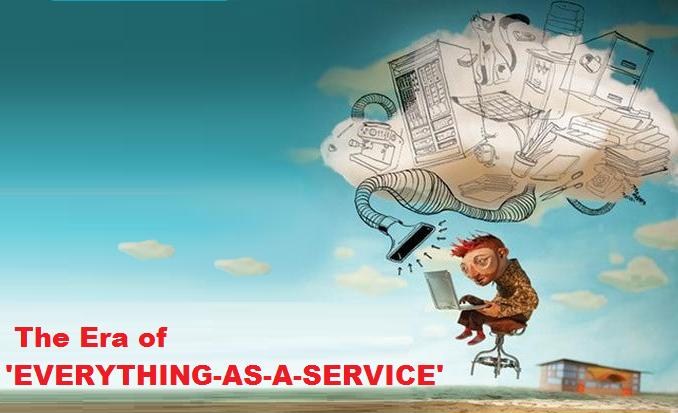The Era of ‘EVERYTHING AS A SERVICE’

The convergence of four major technology waves – Cloud Computing, Big Data, Business and Social mobility – have caused disruptions and consequently, opportunities and risks to the business and IT areas.
Adopting and efficiently managing these four waves will cause significant impact on managers and IT professionals. Two aspects stand out: governance and management of this new environment, and the critical need to rethink about the architecture of new systems that encompass these technological waves. In this post we will discuss the issue of the architecture of these new systems.
Current systems developed by the client-server paradigm, were not meant to consistently integrate features such as social business, mobility and Big Data, and were not designed to operate in the cloud environment. Understandable. Everything is very new. After all, the wave of mobility began to form with the success of the iPhone (released in 2007) and tablets (marked by the announcement of the iPad in 2009). Social business has been equated to Facebook and seen as just another marketing medium to relate to their customers, without worrying about the legacy of the corporation. Big Data was initially seen as a new name for Data Warehouse, or “do it now”, and Cloud Services emerged with great suspicion. Incidentally, the same as twenty years ago, a time in which it began to speak in client-server!
The current technological landscape is much different scenario than years ago. The environment was the central ERP and everything revolved around it. Today continues the ERP based processing of transactional data, but serves only 30% to 40% of the information needs of an enterprise. The new systems must work seamlessly with the technology waves. That is, an interaction via social media, originating from a tablet generates a transaction of sale and disposal of stock, through an analysis, probably in real time, customer profile, to propose a promotional action of cross-selling.
This context leads to a service-based architecture (The term SOA may have gone up, but service-oriented applications are real and present demand) because the basic principles of this model (encapsulation, separation of duties, low coupling, etc.) allow you to develop applications with this level of integration with various technologies.
Well, Now The Problems Start…
First training:
After a period of splendor, where SOA was the symbol of fashion, the term fell into disuse and unfortunately today not all developers are able to develop applications that are truly SOA. Moreover, in recent years, the concentration of the training was the client-server model, coupled to the keyboard-mouse paradigm, therefore, is not an easy skill to get developers to develop new applications, touch-screen, integrated with social platforms and business acting with Big data technologies in real time, in a cloud environment.
Let’s discuss a little more about this architecture. The basic concept of the new systems will probably be “everything as a service” and will be a core application framework with APIs that allow users to develop new features. A simple example: why the screen of Internet banking has to be the same for all users? If access to basic resources are made via secure APIs, the bank will be responsible only for core systems (and possibly a default home page as default), leaving the interfaces being developed by other companies and by the users. The characteristics of this architecture are essentially SOA: high modularity, distributed services (services can be in clouds of various providers), low coupling, easy replacement services (typical model adopted by companies on the web that is always in beta mode, ie , constantly evolving services without impacting operating around).
One suggestion is to use as benchmarks for new systems not application templates that other companies in the industry use, but look at Internet companies and evaluate how they solve the challenge of being given huge amounts of data, constantly implementing new features and using APIs to foster an ecosystem of new applications created by other companies and their users.
Anyway, we are facing major changes that will affect the areas and IT professionals. The system architecture and software architects now have a major role. But they must be prepared for these changes!
- How Cloud Computing Is Changing The Labor Market - March 25, 2015
- Adopting Infrastructure as a Service Can be a Good Deal - March 17, 2015
- Will Virtualize? Take These Six Points Into Consideration - March 12, 2015
